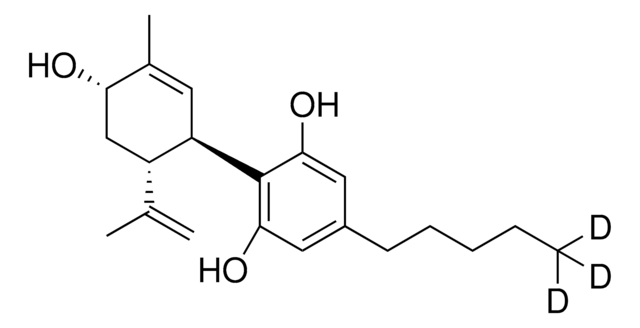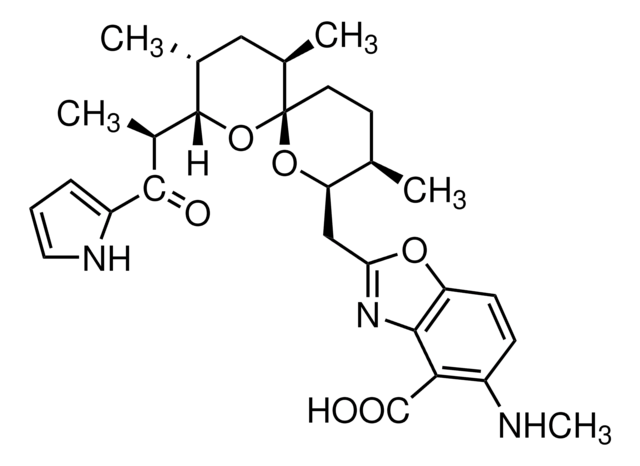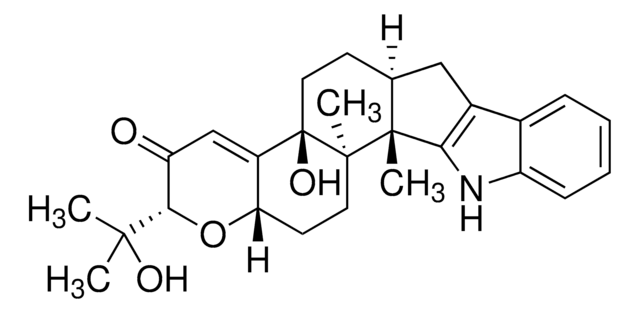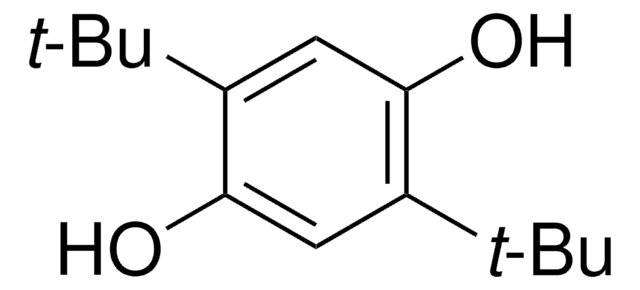C1530
Cyclopiazonic acid
from Penicillium cyclopium, ≥98% (HPLC), powder, sarcoplasmic reticulum Ca²⁺-pump inhibitor
Sinónimos:
CPA
About This Item
Productos recomendados
Nombre del producto
Cyclopiazonic acid from Penicillium cyclopium, ≥98% (HPLC), powder
Quality Level
assay
≥98% (HPLC)
form
powder
color
white to off-white
solubility
DMSO: soluble
chloroform: soluble
storage temp.
−20°C
SMILES string
CN1C(=O)C(=C(\C)O)\C(=O)C2C(Cc3cccc4[nH]cc2c34)C1(C)C
InChI
1S/C20H22N2O3/c1-10(23)15-18(24)17-12-9-21-14-7-5-6-11(16(12)14)8-13(17)20(2,3)22(4)19(15)25/h5-7,9,13,17,21,23H,8H2,1-4H3/b15-10-
InChI key
WJCPGKDPOYBOOJ-GDNBJRDFSA-N
Gene Information
human ... ADORA1(134) , ADORA2A(135) , ADORA3(140)
mouse ... Adora1(11539)
rat ... Adora1(29290) , Adora2a(25369) , Adora3(25370)
General description
Application
- as a standard in aflatoxin detection and quantification by thin layer chromatography (TLC)
- as a component in Ca2+-free DMEM/10% fetal bovine serum (FBS)
- as a reversible inhibitor of the sarco/endoplasmic reticulum Ca2+-ATPase (SERCA) to examine the role of luminal calcium in endoplasmic recticulum (ER)-to-Golgi trafficking
- as an endoplasmic reticulum Ca2+-ATPase blocker, to treat neurons and also to study the role of the endoplasmic reticulum (ER) in releasing and sustaining Ca2+ during Ca2+-induced Ca2+ release (CICR) to inhibit SERCA
Biochem/physiol Actions
signalword
Danger
hcodes
Hazard Classifications
Acute Tox. 2 Oral
Storage Class
6.1A - Combustible acute toxic Cat. 1 and 2 / very toxic hazardous materials
wgk_germany
WGK 3
flash_point_f
Not applicable
flash_point_c
Not applicable
ppe
Eyeshields, Faceshields, Gloves, type P2 (EN 143) respirator cartridges
Elija entre una de las versiones más recientes:
¿Ya tiene este producto?
Encuentre la documentación para los productos que ha comprado recientemente en la Biblioteca de documentos.
Los clientes también vieron
Nuestro equipo de científicos tiene experiencia en todas las áreas de investigación: Ciencias de la vida, Ciencia de los materiales, Síntesis química, Cromatografía, Analítica y muchas otras.
Póngase en contacto con el Servicio técnico









